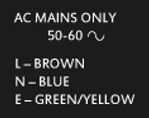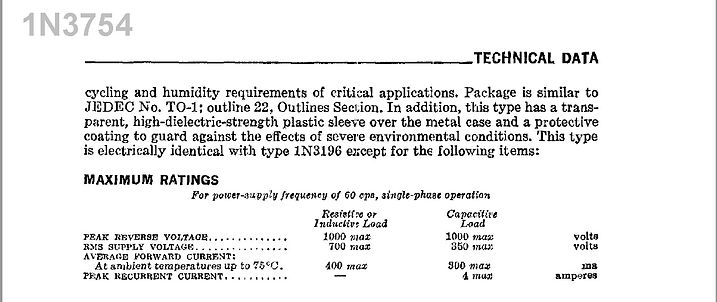
ER40, PA40, ER100 & PA100






(Plus SL40 & SL100)

IMPORTANT: These drawings and notes are provided for interest only and are not guaranteed to be accurate. Use at your own risk and discretion. The equipment shown contains lethal voltages and should only be worked on by people with suitable training and experience. Schematics and layouts are typical but will vary.
Two pairs of identical twins from the Sixties and Seventies. The ER and PA versions of each type seem to have been identical (including the price) apart from the model number on the front panel. Bit of mystery there.
Talking of prices, anyone remember currency decimalisation in the UK? Chancellor Jim Callaghan took us into the future on 'D-Day' , Monday the 15th of February 1971. You can see the Pounds, Shillings and Pence in the 1970 Bell Musical Instruments catalogue change to Pounds and New Pence in the 1st of December 1970 WEM Retail Price List. They managed to slip a few price rises in at the same time.
Both types are great guitar amps but, at first sight, one volume control per channel and hi/lo inputs would be disappointing if you wanted more than two mics . If inputs 1 and 2 are used at the same time, though, their sensitivities become identical, so four mics are a possibility. Main vocalist in one channel and backup vocals in the other seems workable. If there are more than three people in the band who can sing you're very lucky.
The 100 watt versions seem to have got the slave link system first, leaving the 40s to catch up a bit later. Early 40s won't have the extra jack socket on the front panel - not that they ever got round to labelling it anyway. One quirky feature to be aware of is the almost 5v dc on the slave output tip.
The SL40 and SL100 are just the power output stages and power supplies from the ER and PA models and were designed to be daisy chained to drive extra sets of speakers. Either of the SLs can be used with any PA/ER amp (40 or 100). They don't have to match. They can also be driven by any equipment with a line level output.
RIGHT:
Just make sure that every amp in the chain has the power output in the same phase. Things can get a bit odd otherwise.
This PA100 came with the speaker wires reversed.
Not a problem until you link it to another amp or attach a scope ground to it.
Just as a side note, the fuse holders in series with the speakers on 40s are an endless source of amusement when they corrode and cause intermittent output.

Mechanically, SLs are connected in series, as described in the catalogues. Electronically, though, the inputs are all driven in parallel from the main amp. The IN and OUT sockets are just joined together internally, so each unit puts an equal load on the output impedance of whatever's driving the stack. Just like the speaker outputs, it doesn't matter which front panel socket you use.
All models are silicon solid state and they're all designed to run into a six ohm load for full output.

Now everybody knows that real men don't need the instructions (and you're not likely to find any anyway) but, just in case, this is what the options were:

In real life, all three outputs are wired in parallel, so any speaker can go into any socket. The amps are quite happy into an open circuit and you can use whatever speaker system you like as long as the total impedance is more than 6ohms. The power output obviously drops off as the impedance goes up.
Twelve and six ohm cabinets are getting hard to come by these days, but two sixteens or an eight will do the job. Don't try it with two eights though.

On the subject of power output, don't expect to get a continuous 40 or 100watts rms with a sine wave. 30watts and 75watts would be doing well at clipping.
Power Connections
If the chassis still has the original mains power inlet, it takes a Bulgin S.A. 2111 (90 deg) or S.A. 1862 (straight) cable mounted, mating socket. And before somebody starts arguing that it's a plug, this is the Bulgin catalogue definition:

Just out of interest, chassis mounted Bulgin plugs from this era usually had split pins that mated with solid, tubular sockets on the cable end. Watkins didn't seem too bothered and you can find split or solid pins at random.

If the amp needs a PAT certificate, it needs to have this system removed and an IEC connector fitted. A Bulgin PX0579 can be used (after the panel is opened out slightly) if it's fitted sideways. They're available from Farnell, RS, Mouser and Digi-Key among others. The original tabs were generally 6.3mm (1/4").
Some older amps are also going to need a short wire link made up to ground the panel metalwork.



PX0579/28 2.8mm solder tabs
PX0579/48 4.8mm solder tabs
PX0579/63 6.3mm solder tabs
PX0579/TERM Screw terminals
A classic, dodgy Bulgin cable. Earth socket completely missing and the whiskers waiting to trip out the venue mains panel.

Open the panel slightly at the arrows to fit a PX0579.

RIGHT:
LEFT:
The PA40


ABOVE:
Early versions won't have the slave link jack socket to the left of the neon lamp.
Catalogue Entries: PA40
Cabinet dimensions: 171/2" x 7" x 101/2"
High powered P.A. amplification. Two channels. Two inputs on each channel, with full range tone and volume controls. Frequency range from 50 c.p.s. to 25 k.c.p.s. 40 watts output. Two speaker outlets of 12 - 15 ohms (6 to 71/2 ohms total). Presence boost by slide switch.
Cash Price £56. 0. 0 (1970 Bell catalogue)
£58.00 in December 1st 1970 WEM Retail Price List
Input Sensitivity: 4 & 8mV high impedance
(This is probably a mistake & should be 7 and 14mV)
Slave Output: 640mV @ 600 ohms
Power Output: 40 watts R.M.S. into 6 ohms
Weight: 18Ib
The PA100


Catalogue Entries: PA100
"A reliable and consistant unit which may be expected to give trouble free performance even when driven for long periods at full power. Two channels with two inputs ( one high and one low sensitivity to each channel ). Presence booster operated by slide switch. Separate Volume, Bass and Treble controls for each channel. Output for slave connection.
(As with all WEM units, the speaker leads are supplied with the amplifier and not the speaker enclosures.)
Input Sensitivity: 7 and 14mV high impedance
Slave Output: 640mV @ 600 ohms
Power output: 100 watts rms @ 6 ohms
Power amp response: Flat 30Hz - 16KHz
Power consumption: 230 watts
Mains: 110 - 220 - 240 volts A.C."
Dimensions: 171/2" w x 7" h x 101/2" d (44.4 x 17.8 x 26.7cm)
Weight: 23Ib
Cash Price in 1970 Bell catalogue £91. 10. 0
£98.50 in December 1st 1970 WEM Retail Price List
The SL100


Catalogue Entries: SL100
Cabinet dimensions: 171/2"(w) x 7"(h) x 101/2"(d) (44.4 x 17.8 x 26.7cm)
The S.L. 100 is a 100 watt Slave Unit. It is for use with any other WEM 100 watt ** output amplifier. For example, if it is wished to increase the power of a WEM 100 watt P.A. system, the SL100 is connected in series (with the preamp) simply with a short jack plug lead. The SL100 would then drive its own pair of extra columns with complete control of the complete system remaining with the original amplifier. The SL100 also has an output jack which, in turn, can be made to drive yet another 100 watt slave.
Cash Price £79. 10. 0 (1970 Bell catalogue)
£86.50 in December 1st 1970 WEM Retail Price List
** You can use it with any of the PA / ER 40 or 100 watt amps.
Input Sensitivity: 640mV high impedance
Power output: 100 watts rms @ 6 ohms
Power amp response: Flat 30Hz - 16KHz
Mains: 110 - 220 - 240 volts A.C."
Weight: 22Ib
The SL40

Catalogue Entries: SL40
"Exactly as SL.100 in appearance and operation but with 40 watts of output power.
Input Sensitivity: 640mV high impedance
Power output: 40 watts rms @ 6 ohms
Power amp response: Flat 30Hz - 16KHz
Mains: 110 - 220 - 240 volts A.C."
Dimensions: 171/2" w x 7" h x 101/2" d (44.4 x 17.8 x 26.7cm)
Weight: 17Ib
Price in Dec 1st 1970 WEM Retail Price List £51.00
The ER40

Catalogue Entries: ER40
Push - pull amplification developing 40 watts of wide range playing power. Primarily intended for use with the Super Bass speaker cabinet or the Dual 12 cabinet. This amplifier has two independent channels with four inputs, separate gain, treble and bass controls on each channel. Treble boost circuits on each channel activated by slide switches. This unit can be purchased separately for use with any existing loudspeaker system of 71/2 ohms. Complete with mains lead and output leads.
Cash Price (Amp only) £56. 0. 0 (1970 Bell catalogue)
£58.00 in December 1st 1970 WEM Retail Price List
"A solid state, general purpose amplifier developing 40 watts R.M.S. for use with any instrument - Guitar, Bass, Keyboards etc. This is a thoroughly reliable and trouble free unit capable of extremely high, clean levels of volume.
Two channels with one high and one low sensitivity input on each channel. Treble boost and separate Volume, Bass and Treble controls for each channel. Output for connecting Slave amplifier.
Input Sensitivity: High 7.5mV @ 1KHz, Low 15mV @ 1KHz
Input Impedance: High
Slave Output: 640mV @ 1KHz (under full power)
Output Impedance: 6 - 8 ohms
Output Power: 40 watts R.M.S. into 6 ohms
Mains: 110 - 220 - 240 volts A.C."
Dimensions: 171/2" w x 7" h x 101/2" d (44.4 x 17.8 x 26.7cm)
Weight: 18Ib (8.16Kg)
The ER100

Catalogue Entries: ER100
This is a very powerful and reliable unit with a clean response. two channels with two inputs on each channel, each channel having its own treble and bass controls and also its own treble boost slide. It gives a genuine 100 watts output which if used in combination with a slave unit and other speaker cabinets can be augmented to 200 watts. Fully transistorised, robust construction and can be guaranteed to give long lasting service.
Cash Price £91. 10. 0 (Amplifier only) (1970 Bell catalogue)
£98.50 in December 1st 1970 WEM Retail Price List
Dimensions: 171/2" w x 7" h x 101/2" d
Weight: 23Ib (10.5Kg)
Chassis and Cabinet Variations
RIGHT:
The back of an early 40 showing an old chassis with captive cables, a steel bracket to wrap them around and clips to store the cabinet attachment bolts.


LEFT:
The same chassis in a new style case with an old label. The speaker / mains panel is at the side, to the left in this illustration.

RIGHT:
A later 40 chassis / case / label combination


The early label shows the old UK mains lead wiring colours of red, black and green. New regs in mid 1969 saw flexible appliance leads change to Brown, Blue and Green/Yellow as shown on the later back panel.
Examples with a hole from top to bottom at each end of the case would have been supplied as part of a head / cab combination with two long bolts to hold them together.

SCHEMATICS & LAYOUTS
These are just snapshots from a long production span.
Layouts, wire colours and component values are going to vary.
PRINTING
Wix (bless 'em 😖) have changed their image format - again - to avif just to make them awkward to print. Unless you want to buy a converter, the easiest way to make a hard copy is:
-
Left click when the magnifying glass icon appears and wait for the picture to clear.
(On a touch screen, tap on the image). This will display a higher res file. -
Right click and 'save image as' to somewhere as an avif file.
(On a touch screen, touch and hold down to view the menu) -
Upload the saved file to your Google Drive.
-
Open the file and use the print menu to make a hard copy or save as a pdf.
Front panels and power sections are interchangeable between ERs and PAs of the same power rating, but NOT between 40s and 100s without changing the resistor on the preamp board that feeds the zener diode voltage regulator (Edit. The resistor value also varies with the type of zener fitted). Component ID numbers shown below follow the factory where available, but the power sections are mostly specific to these drawings. Preamp numbers start at 1 and power components start at 101. Con1 and Con2 on the preamps mate with Con101 and Con102 on the power amps.
HUM and NOISE
In all WEM heads in this configuration, coupling between the mains transformer area and the front preamp board tends to cause hum even with the volumes right down and a few units were produced with a metal screen fitted between the two sections. If the front panel is unscrewed and laid flat, the hum generally quietens down (yes I know you can't use it like that). Since it's only a (small) problem in a studio setting and nobody's going to notice on stage, it's not worth spending hours on the test bench trying to get rid of it.

The other characteristic they all have in common is noisy volume pots at switch on. While all of the caps are busy charging up there can be two to three volts DC across the pots. It normally cleans up after about thirty seconds and isn't a problem. If the volume pots continue to crackle and Deoxit doesn't work, it's worth trying to rebuild them. They're almost impossible to find and good quality when they were new.
Preamp Schematic
WEM ER40, PA40, ER100 & PA100
Later Version From PA40 Ser No. 15063

Preamp Layout
WEM ER40, PA40, ER100 & PA100
From PA40 Ser No. 15063
Issue 2 is just flipped over to show the servicing position.

Power Section Schematic
WEM ER40, PA40 & SL40
From PA40 Ser No. 15063

Power Section Layout
WEM ER40, PA40 & SL40
From PA40 Ser No. 15063

Power Section Schematic
WEM ER100, PA100 & SL100
Early models
Taken from an existing hand drawn schematic. Not checked against an actual chassis.

Power Section Layout
WEM ER100, PA100 & SL100
Early models

Sorry, haven't got one to take apart.
Power Section Schematic
WEM ER100, PA100 & SL100
From PA100 Ser No. 54402
Later models with short circuit protection

Power Section Layout
WEM ER100, PA100 & SL100
Later models with short circuit protection

Power Board Layout
WEM ER100, PA100 & SL100
Later models with short circuit protection

Odds & Ends






